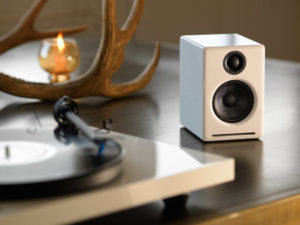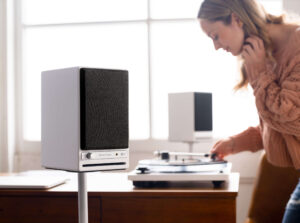How Vinyl Records Are Made
For those captivated by the complexities of sound, sound engineering is a subject of fascination. This article explores the specialized techniques in making vinyl records, the burning process, and the mechanics of turntable sound reproduction. We'll also delve into how these elements offer a superior audio experience that maintains the original sound's integrity.
The Engineering Behind Vinyl Records
The process of creating a vinyl record is an intricate blend of craftsmanship and high-precision engineering. It all begins in a state-of-the-art recording studio, where microphones of various types and capabilities capture every nuance from musical instruments and vocals. This raw sound is then converted into an analog signal that serves as the blueprint for the vinyl record.

Once the recording is set, the cutting engineer steps in, a maestro in a studio filled with specialized equipment. At the heart of this studio is the cutting lathe, a machine equipped with a cutting stylus that translates the analog signals into physical grooves on a lacquer disc. The stylus, often made of a diamond or sapphire tip, moves in sync with the analog signal's waveform, etching a complex pattern of grooves into the lacquer with microscopic precision.

Two critical engineering techniques come into play during this phase: micro-groove geometry and dynamic range optimization. Micro-groove geometry refers to the specific dimensions and spacing of the grooves, optimized for the stylus to track accurately during playback. This meticulous geometry ensures that the full spectrum of sound frequencies is captured, from the lowest bass notes to the highest treble tones.
Dynamic range optimization is another marvel of engineering that balances the loud and quiet segments of the audio. By modulating the depth and width of the grooves, the cutting engineer ensures that the dynamic range of the original recording remains intact. This optimization technique brings out the emotional nuances of the music, preserving soft melodies and impactful crescendos alike.
Turntables: The Mechanics of Sound Reproduction

The Soul Behind the Sound: How Turntables Work
We've all felt that unique connection when the needle drops on a vinyl record. But the technology behind that experience is just as fascinating. When you play a vinyl, your turntable acts as a mechanical device that translates the physical grooves on the record into an electrical signal. This conversion allows you to hear music in a manner that accurately captures the qualities of the original recording. Yet, this electrical signal is not quite ready for your speakers or headphones—it needs a boost.
The Unsung Heroes: Amplifiers and Preamplifiers
Ever wonder why you can't plug your turntable directly into your Home Music System? It's because the electrical signal generated by the turntable is too weak to directly drive speakers or headphones. That's where amplifiers and preamplifiers come in. These devices serve as the bridge between your turntable and your high-fidelity speakers.
The phono preamplifier is specialized to handle the weak signals generated by a turntable, conditioning them for the next stage of amplification. The amplifier then takes these conditioned signals and elevates them to a level that can drive your speakers, delivering audio that captures the full richness and detail of the original recording.

Analog vs. Digital: Unveiling the Layers of Sound Preservation
In the modern audio landscape, listeners often find themselves choosing between digital and analog formats. While digital formats like MP3, AAC, or FLAC offer the convenience of portability and easy storage, they come with compromises that can affect your listening experience.
Digital audio relies on data compression algorithms to reduce file sizes. These algorithms, like the Lossy compression used in MP3, remove audio components that are considered "less important," leading to a diluted version of the original recording. As a result, high-frequency details and the depth that add texture to music can be lost.

Imagine standing in front of a grand, intricate mural, only to watch it being sanded down, erasing the details that gave it life and depth. That's what lossy audio formats like MP3 do to your music. They strip away the high-frequency details and the rich textures, leaving you with a musical experience that's akin to a photocopy of a masterpiece.
Contrast this with analog formats like vinyl records, which offer a full, unaltered audio signal, akin to standing in front of that grand mural in all its original glory. With analog, you're not just hearing music; you're experiencing every crescendo, every subtle nuance, as if you're in the recording studio with the artist.
Why Audioengine Home Audio Systems Are the Ideal Choice
Audioengine's home audio systems distinguish themselves through superior craftsmanship and unrivaled performance. The cabinets of our speakers are handcrafted from real wood, a material that naturally enhances sound clarity and reduces unwanted vibrations. Inside these cabinets, we incorporate custom-built woofers and silk tweeters, hand-tuned to deliver balanced, high-fidelity audio across all frequencies.








